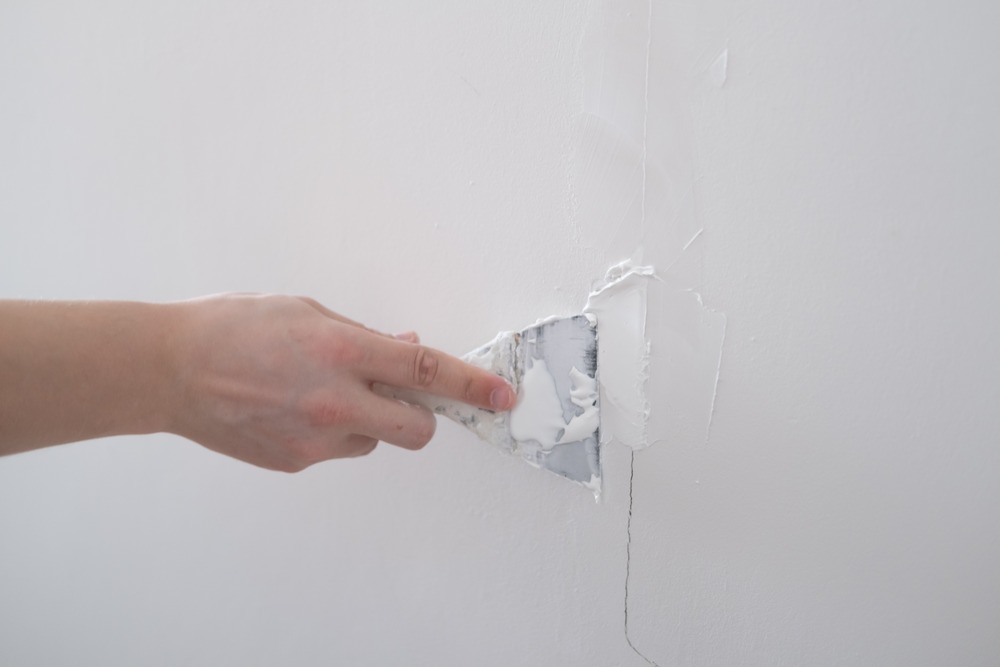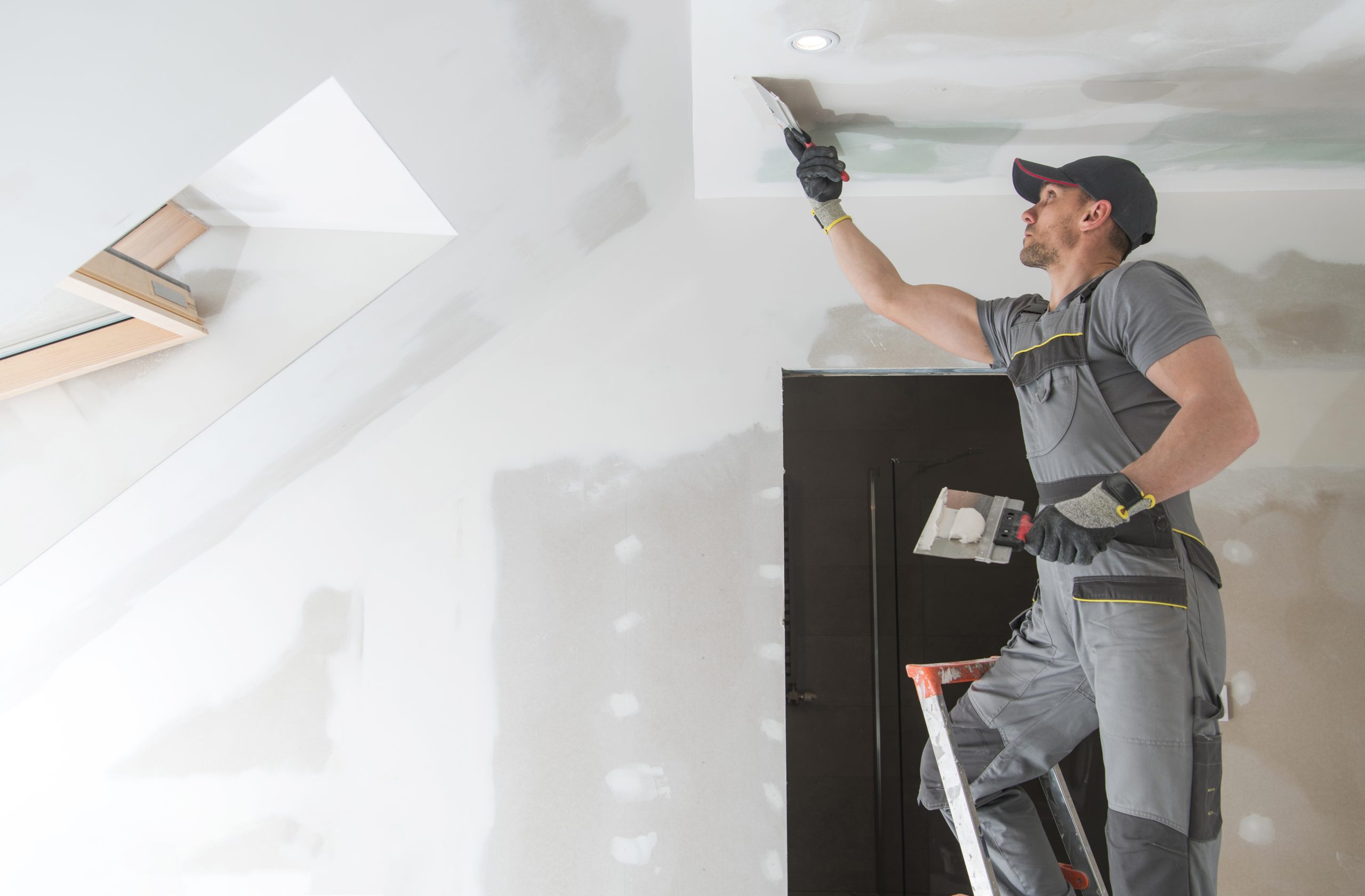Step-by-Step Approaches to Achieving Flawless Drywall Repair Work and Setup
Attaining perfect drywall repair work and installation needs an organized approach. It involves understanding the various kinds of drywall and the tools required for the job. Appropriate area prep work is essential prior to beginning any type of job. drywall contractor. Each step, from covering holes to mounting new sheets, needs interest to information. The process does not end with installment; ending up strategies are crucial for a polished appearance. The next actions will ensure a smooth outcome, yet just what do they involve?
Recognizing Drywall Kind and Equipment Needed

The installation devices are just as essential. An energy blade is essential for cutting drywall sheets, while a drywall saw can assist in making accurate cuts for electrical outlets or components. T-squares assure precise dimensions, and drywall screws or nails protect the panels to wall surface studs. In addition, a drywall lift can promote the installation of huge sheets, reducing physical pressure. Knowledge with these devices and kinds appreciably adds to the efficiency and top quality of drywall tasks.
Preparing the Location for Repair or Setup
Preparing the location for drywall repair or installation is crucial to guarantee a reliable and smooth process. The surrounding room should be removed of furniture and various other challenges to provide enough working space. This not just guarantees safety and security however additionally prevents damages to items. Next, it is necessary to cover the flooring with ground cloth to capture any type of particles or dust generated throughout the job.
Furthermore, the walls need to be inspected for any type of loose paint or wallpaper that might disrupt bond. Getting rid of these elements develops a clean surface for the brand-new drywall. Before beginning, it is advisable to switch off power to electrical outlets or components in the area. Guaranteeing sufficient illumination in the office will even more improve exposure and focus during the fixing or installation procedure. Interior Painting. By diligently preparing the area, one lays the groundwork for a successful drywall project
Step-by-Step Process for Patching Holes

Covering holes in drywall calls for a methodical approach to assure a seamless repair service. The very first step entails evaluating the dimension of the hole. For small holes, a patching substance might be adequate, while larger openings demand a patch. Next, the damaged location must be cleaned up and prepared by Our site eliminating any loosened particles.
For small openings, using spackling substance with a putty knife is recommended, smoothing it over the hole and feathering the sides. When completely dry, sanding the area assures a smooth finish. For bigger holes, a drywall spot need to be reduced to dimension, placed over the opening, and protected with screws. After setting up the patch, the very same spackling process is duplicated, complied with by fining sand.
The patched location must be topped and painted to match the bordering wall surface. This thorough process ensures a professional look and extends the lifespan of the repair.
Installing New Drywall Sheets: A Comprehensive Guide
Installing brand-new drywall sheets calls for careful planning and execution to guarantee a visually appealing and tough finish. First, the area has to be measured accurately to determine the number of sheets needed. It is important to choose the appropriate thickness, normally 1/2-inch for interior wall surfaces and 5/8-inch for ceilings or fire-rated applications.
Next, the studs or framework need to be checked for any type of abnormalities, ensuring they are straightened and properly spaced. When placing the drywall sheets, they need to be positioned flat to minimize seams and improve structural integrity. A drywall lift can be beneficial for overhanging installations.
Fastening the sheets website link with drywall screws at suitable intervals makes sure a secure setup. It's crucial to countersink the screws somewhat listed below the surface area to get ready for the ending up process. Complying with these guidelines will certainly bring about a solid foundation, all set for the following action in drywall completing.
Ending Up Touches: Taping, Mudding, and Fining Sand Strategies
Once the drywall sheets are safely fastened, the focus changes to the finishing touches that will certainly offer a sleek look. This procedure begins with taping, making use of either paper or fiberglass mesh tape to cover the seams in between sheets. The tape assures see this site a smooth change, reducing the threat of cracking. Following taping, mudding is vital; a joint compound is used over the tape to fill up spaces and produce a seamless surface. Commonly, numerous coats are required, every one feathery out better than the before reduce presence.
After sufficient drying out time, sanding is the final step in attaining a flawless finish. A fine-grit sandpaper is utilized to smooth the dried compound, guaranteeing there are no bumps or imperfections. Attention to detail during this phase is significant, as it considerably affects the overall appearance of the wall. The end outcome need to be an also, professional-looking surface ready for priming and painting.
Often Asked Concerns
Exactly how Do I Choose the Right Drywall Thickness for My Task?
To select the best drywall density, consider the task's function, location, and structural needs. Requirement thicknesses consist of 1/2-inch for general use and 5/8-inch for fire-rated applications, guaranteeing longevity and conformity with building ordinance.

Can I Install Drywall Over Existing Drywall?
Yes, installing drywall over existing drywall is possible. Nevertheless, it is important to assure the underlying surface is protected and complimentary from damages. Correct fastening and consideration of density are critical for an effective installment.
What Are the very best Practices for Drywall Disposal?
The most effective methods for drywall disposal consist of reusing when possible, utilizing neighborhood waste administration services, and following guidelines for dangerous materials if applicable. Interior Painting. Correctly securing and labeling waste warranties conformity and safety and security throughout disposal
Just how Long Should I Await Mud to Dry Before Sanding?
Typically, one need to wait 24-hour for drywall mud to dry before sanding. Drying out time can differ based on moisture and temperature, so checking for a firm texture is a good idea prior to proceeding.
Exist Eco-Friendly Drywall Options Available?
Yes, environmentally friendly drywall alternatives are available. These options frequently utilize recycled products, low-VOC adhesives, and sustainable production approaches, lowering environmental impact while supplying reliable insulation and sturdiness for various construction and remodelling jobs.
An utility knife is important for reducing drywall sheets, while a drywall saw can assist in making specific cuts for outlets or fixtures. Preparing the location for drywall repair work or installment is essential to guarantee a smooth and reliable procedure. Covering openings in drywall needs a systematic technique to assure a smooth repair work. Setting up brand-new drywall sheets needs mindful preparation and implementation to assure a durable and visually enticing coating. Yes, setting up drywall over existing drywall is feasible.